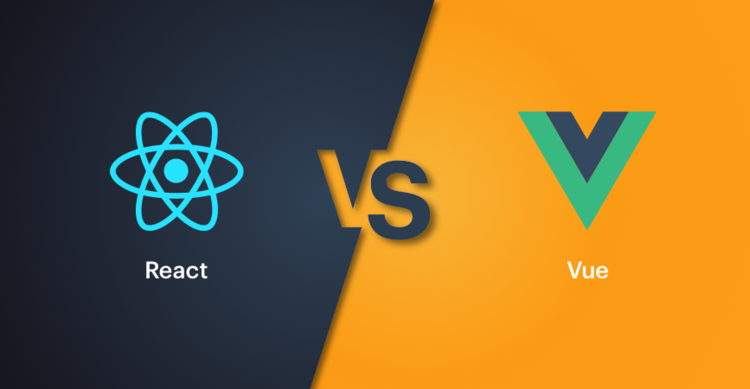admin2024-03-16T10:40:57+05:00
Making the Right Choice for Front-End Development: React vs Vue
In the dynamic field of front-end development, the decision between React and Vue is pivotal, shaping the course of digital projects. React, a veteran supported by Facebook, and Vue, a rising star known for simplicity, each offer unique advantages and considerations. This comprehensive guide aims to unravel the complexities surrounding this decision, empowering developers and decision-makers.
Component-Based Architecture
Both React and Vue advocate for a component-based architecture, enhancing code reusability, maintainability, and scalability. React provides explicit component structures, granting fine-grained control but potentially leading to a steeper learning curve. Vue, with a more opinionated approach, emphasizes convention over configuration, streamlining development and reducing cognitive load.
State Management
Effective state management is vital for responsive applications. React often employs external libraries like Redux, offering robust solutions but adding complexity. Vue integrates state management seamlessly with Vuex, simplifying the process without compromising flexibility, especially beneficial for smaller projects.
Performance
Performance is crucial, particularly for interactive applications. React’s virtual DOM allows efficient updates, ensuring a smooth user experience. Vue, with a lightweight virtual DOM, balances functionality and speed, making it attractive for performance-critical applications.
Flexibility and Ecosystem
React’s flexibility allows developers to choose preferred tools, fostering customization but possibly leading to decision fatigue. Vue offers a cohesive ecosystem, reducing reliance on external dependencies and promoting a straightforward development experience.
Integration with Other Technologies
Compatibility with other technologies is essential within broader tech stacks. React’s popularity results in extensive support and libraries, facilitating seamless integration. Vue’s growing ecosystem, while having fewer integrations compared to React, is expanding rapidly, making it increasingly viable for customizable integrations.
Tooling and Development Environment
React’s ecosystem provides tools like Create React App for efficient project setup, abstracting away configuration complexity. Vue offers Vue CLI, simplifying project scaffolding and configuration, aligning with Vue’s philosophy of accessibility and enjoyment in development.
Popularity and Community Support
React boasts a sprawling and vibrant community, fostering innovation and shared knowledge. Vue, despite being younger, has gained rapid traction due to its simplicity and approachability, resulting in an enthusiastic and welcoming community.
Conclusion
The choice between React and Vue depends on project-specific requirements. React is suitable for large-scale applications requiring intricate state management, flexibility, and extensive ecosystem support. Vue excels in scenarios prioritizing rapid adoption, ease of integration, and a cohesive development environment. A thorough understanding of both frameworks empowers informed decision-making aligned with project objectives.

